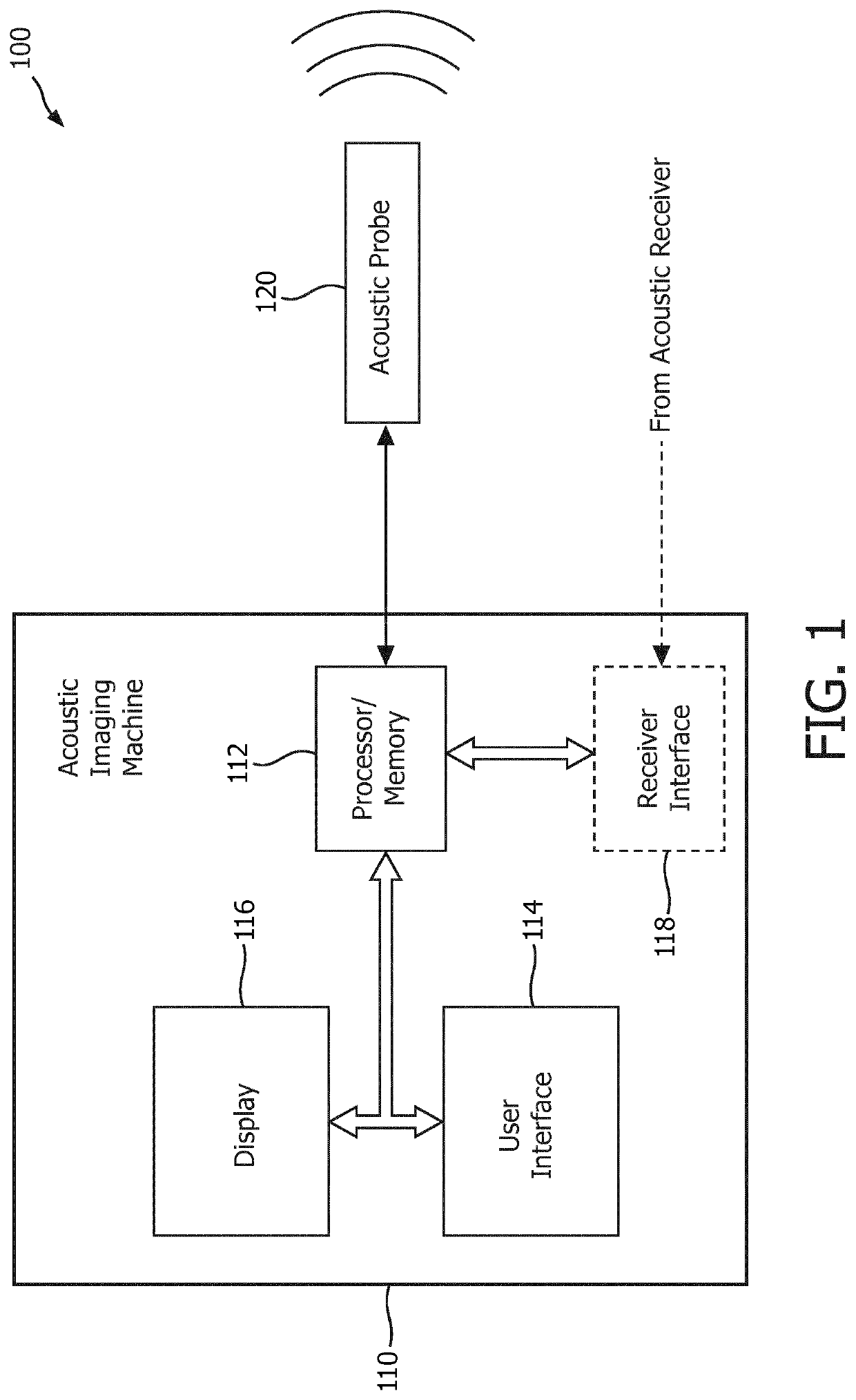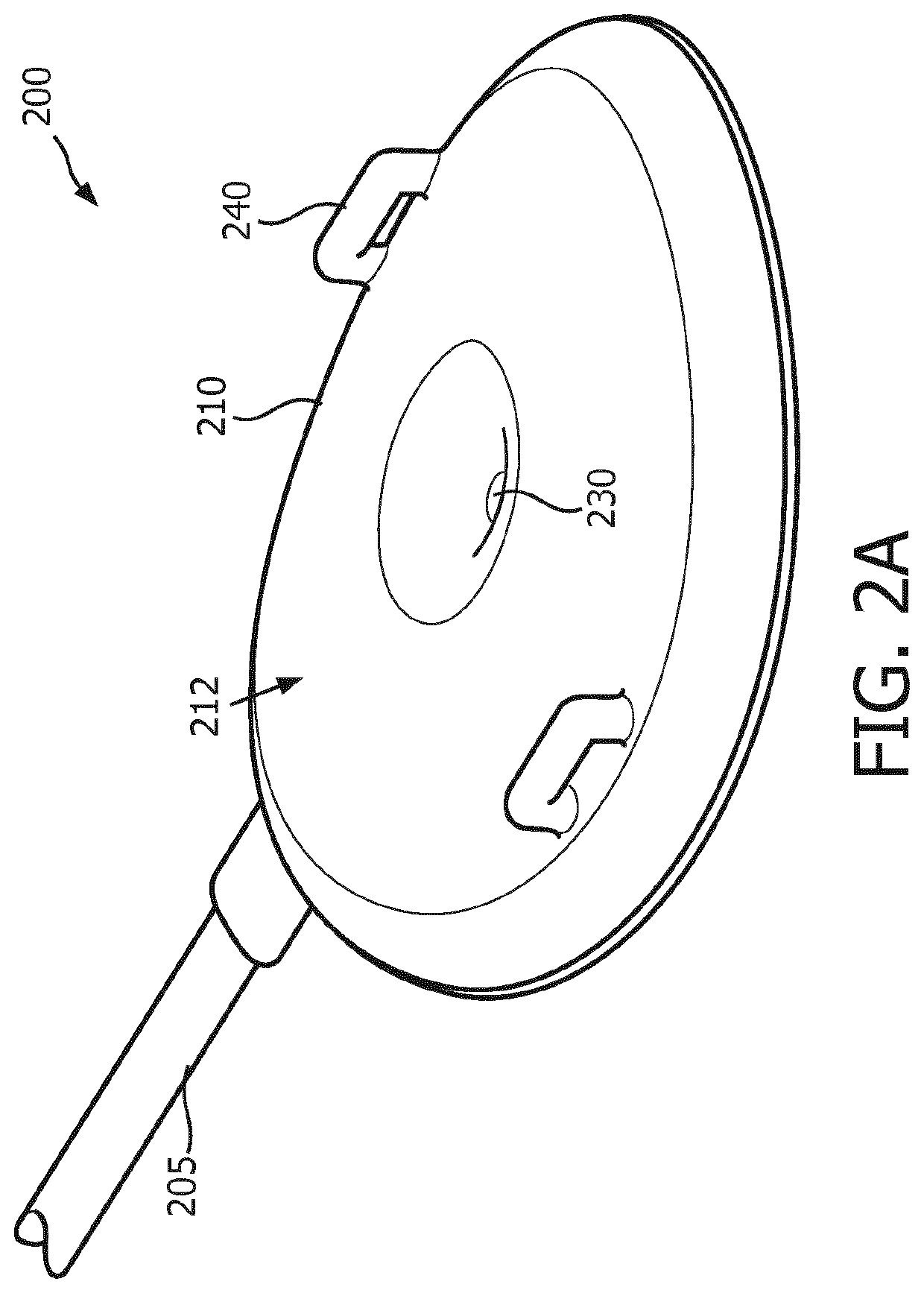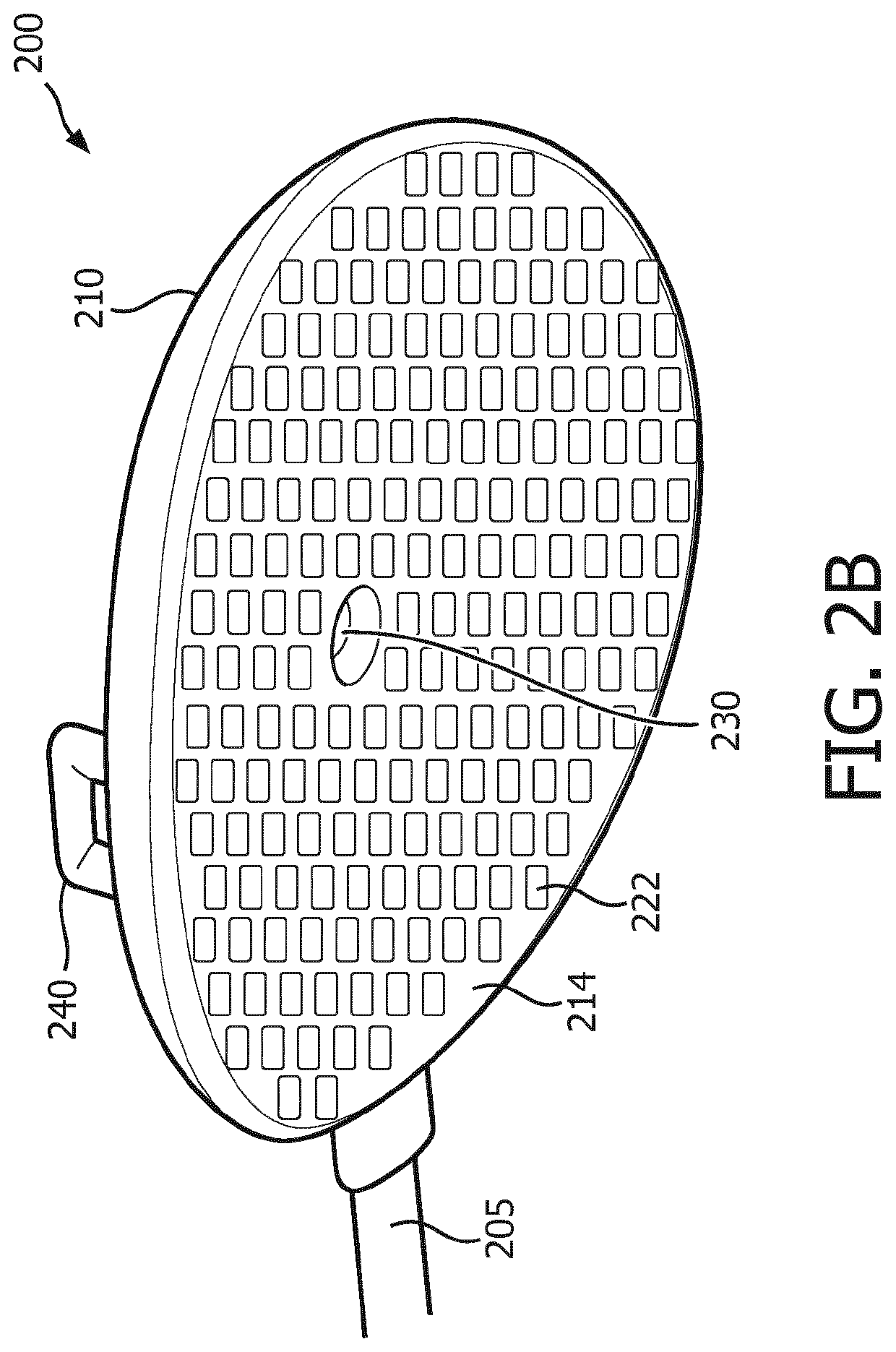Device for interventional acoustic imaging
a technology for interventional acoustic imaging and imaging devices, which is applied in the field of acoustic imaging, can solve the problems of significant percentage of cvs procedures described by physicians as difficult, and the visualization of interventional devices or devices employed in these procedures using existing acoustic probes and imaging systems is challenging, and achieves the effect of mitigating aberration artifacts
- Summary
- Abstract
- Description
- Claims
- Application Information
AI Technical Summary
Benefits of technology
Problems solved by technology
Method used
Image
Examples
Embodiment Construction
[0045]The present invention will now be described more fully hereinafter with reference to the accompanying drawings, in which preferred embodiments of the invention are shown. This invention may, however, be embodied in different forms and should not be construed as limited to the embodiments set forth herein. Rather, these embodiments are provided as teaching examples of the invention. Herein, when something is said to be “approximately” or “about” a certain value, it means within 10% of that value.
[0046]FIG. 1 shows one example of an acoustic imaging system 100 which includes an acoustic imaging machine 110 and an acoustic probe 120. Acoustic imaging machine 110 include a processor (and associated memory) 112, a user interface 114, a display 116 and optionally a receiver interface 118.
[0047]In various embodiments, processor 112 may include various combinations of a microprocessor (and associated memory), a digital signal processor, an application specific integrated circuit (ASIC...
PUM
 Login to View More
Login to View More Abstract
Description
Claims
Application Information
 Login to View More
Login to View More - R&D
- Intellectual Property
- Life Sciences
- Materials
- Tech Scout
- Unparalleled Data Quality
- Higher Quality Content
- 60% Fewer Hallucinations
Browse by: Latest US Patents, China's latest patents, Technical Efficacy Thesaurus, Application Domain, Technology Topic, Popular Technical Reports.
© 2025 PatSnap. All rights reserved.Legal|Privacy policy|Modern Slavery Act Transparency Statement|Sitemap|About US| Contact US: help@patsnap.com



